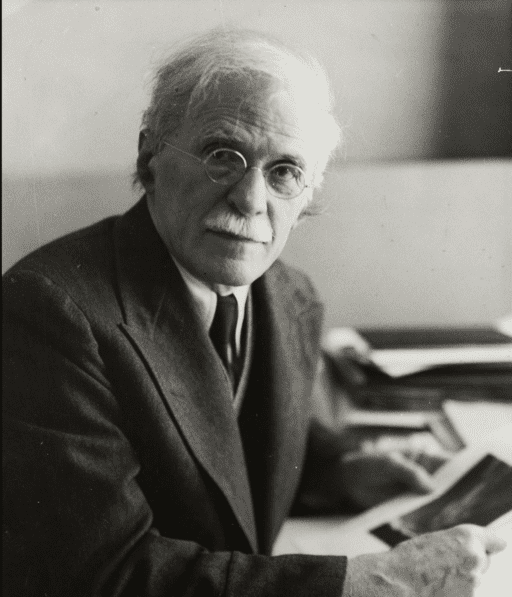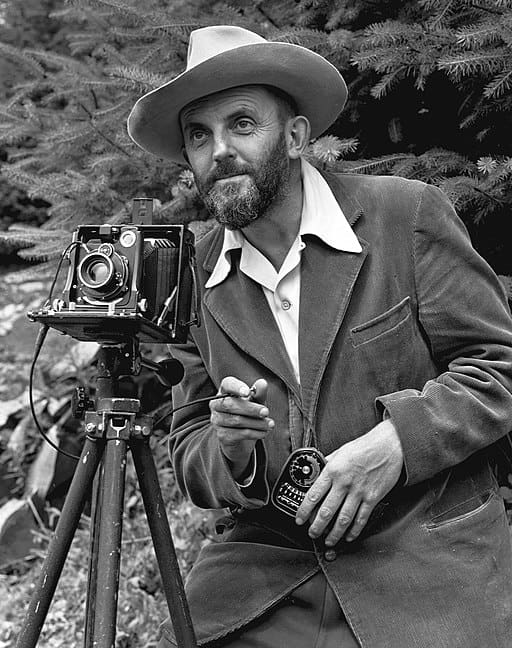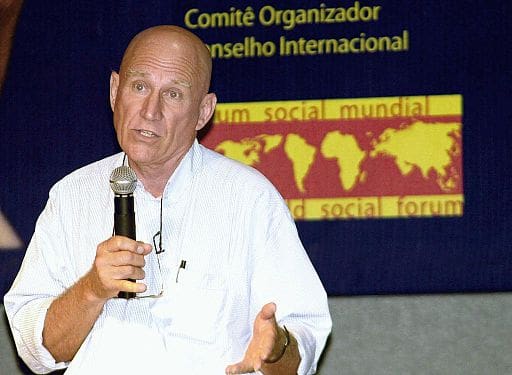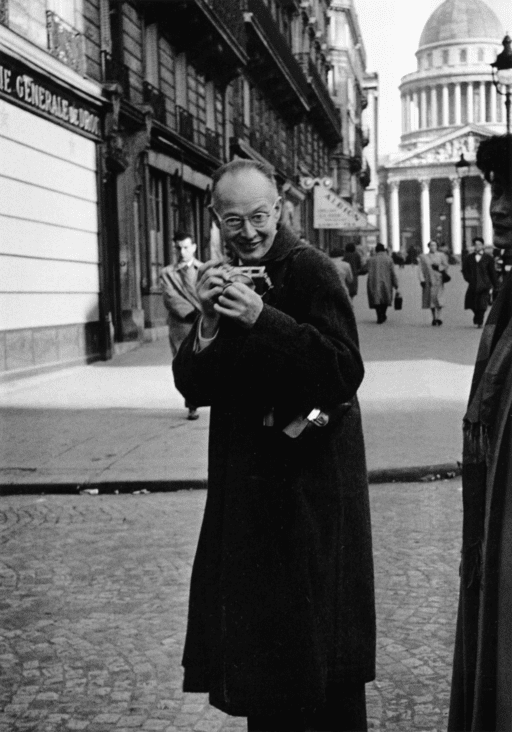20 Stunning Black and White Photos That Are Famous
Dim the lights, folks, and gather ’round the glowing screen. Tonight, we dive into a world bathed in silver and shadow, where iconic moments dance in shades of gray. No technicolor distractions, just the raw, unfiltered truth laid bare in 20 black and white photographs that have etched themselves onto the soul of humanity.
Imagine a sailor, swept off his feet in the euphoric chaos of Times Square, planting a kiss on a stranger under a confetti blizzard. Feel the grit beneath the boots of construction workers perched precariously on a skyscraper’s steel skeleton, dwarfed by the New York City sprawl.
These are the stories whispered in whispers, captured in a single frozen frame. We’ll meet a defiant man facing down a tank, a mother shielding her children from the dust bowl’s cruel grip, and a young Afghan girl whose piercing gaze transcends war and poverty.
So, buckle up, dear reader. Tonight, we journey through time, across continents, and into the beating heart of history, one iconic black and white photograph at a time.
1.”The Kiss of Death” by Alfred Stieglitz (1914)

Alfred Stieglitz. William H. Zerbe, Public domain, via Wikimedia Commons
Alfred Stieglitz’s iconic photograph “The Kiss of Death” captures a tender moment of intimacy between a couple perched precariously on a New York City fire escape. The man and woman are locked in a passionate embrace, seemingly oblivious to the hustle and bustle of the city streets below them. Stieglitz expertly contrasts the couple’s solitude and connection with the crowded urban backdrop. The fire escape itself speaks to themes of risk and peril, giving the work an ominous overtone belied by the couple’s affectionate pose. “The Kiss of Death” beautifully encapsulates a fleeting instance of love and companionship amidst the alienation of modern city life. Stieglitz froze this couple in a timeless instant, allowing the viewer to project their own interpretations onto the couple’s relationship and future.
2. “Lunch Atop a Skyscraper” by Lewis Hine (1932)
Lewis Hine’s iconic “Lunch Atop a Skyscraper” captures the nonchalant bravery of construction workers during the building of Rockefeller Center in 1932. The photograph depicts eleven men sitting perpendicular on a narrow steel beam, casually eating their lunches hundreds of feet above New York City, without safety harnesses. Hine highlights the hazards and risks associated with their labor, as the workers face both the precarious heights and lack of safety equipment. Yet the men seem undaunted, laughing and relaxing high above the streets during their lunch break. The image encapsulates the daring and danger accompanying the ambitious scale of construction in 1930s New York City. Despite perilous conditions, these workers display calmness and camaraderie at great heights.
3. “Migrant Mother” by Dorothea Lange (1936)

Dorothea Lange. Dorothea_Lange_1936.jpg: Dorothea_Lange ???derivative work: Svajcr, Public domain, via Wikimedia Commons
Dorothea Lange’s “Migrant Mother” epitomizes the struggle and strength of American families during the Dust Bowl and Great Depression. The 1936 photograph depicts a weary mother cradling her sleeping children, her face etched with worry and fatigue. Lange captures the woman’s visible hardship and poverty, from her worn clothes to the makeshift tent sheltering her family. Yet her expression exudes resilience and perseverance to protect her children. The Migrant Mother came to symbolize the indomitable spirit of impoverished farming families who fled westward seeking work, only to find more deprivation. Lange’s photograph continues to remind America of the grim toll the Great Depression took, while honoring the courage and determination of those who endured severe hardship.
4. “V-J Day in Times Square” by Alfred Eisenstaedt (1945)
Alfred Eisenstaedt’s iconic “V-J Day in Times Square” encapsulates the jubilation and revelry at the end of World War II. The image captures a sailor spontaneously kissing a woman in a white dress on Victory over Japan Day in 1945, as New Yorkers celebrate in the streets. Eisenstaedt froze this singular moment of unbridled emotion and elation, as the pair are locked in an intimate embrace, oblivious to the joyous commotion around them. The spontaneity and passion of the photograph reflects the national relief at the war’s long-awaited conclusion. While the subjects’ identities remain unknown, their kiss symbolizes the outpouring of hope, love, and optimism across America as peace is finally restored. This iconic image continues to evoke the euphoric spirit of V-J Day.
5. “The Falling Soldier” by Robert Capa (1936)

Robert Capa. 三木淳, Public domain, via Wikimedia Commons
Robert Capa’s controversial “The Falling Soldier” photograph captures the stark brutality of the Spanish Civil War. The iconic 1936 image depicts a Loyalist militiaman mortally wounded by a bullet to the head during the battle of Cerro Muriano. Controversy surrounds the authenticity of the location and identity of the soldier, yet the emotive power of the photograph remains indisputable. The soldier’s collapsed body frozen in time epitomizes the tragedy and futility of war. Capa conveys the finality and violence of combat through the soldier’s limp posture and shattered expression moments before his death. The photo provides an anti-war statement by unveiling the graphic realities of conflict, sacrifice and loss. “The Falling Soldier” continues to serve as a reminder of war’s devastating cost to human life.
6. “Napalm Girl” by Nick Ut (1972)
Nick Ut’s “Napalm Girl” seared the horrific human costs of the Vietnam War into the world’s consciousness. His Pulitzer Prize-winning photograph from 1972 captures nine-year-old Phan Thị Kim Phúc running naked in agony after a South Vietnamese napalm attack. Young Kim Phuc’s arms outstretched and mouth frozen in an anguished wail reveal her unimaginable pain as napalm burns her flesh. Images of the bereft, terrified children puncture the viewer deeply. Despite political rationalizations, the photo unequivocally exposes the war’s inexcusable brutality against civilians. “Napalm Girl” provoked international outrage and fueled protests against American involvement in Vietnam. Through capturing this unforgettable image of human suffering, Ut conveys war’s devastating toll on innocents in a profoundly moving anti-war statement.
7. “Afghan Girl” by Steve McCurry (1984)

Steve McCurry. John Ramspott from Oxford, GA, USA, CC BY 2.0, via Wikimedia Commons
Of all Steve McCurry’s stunning photographs over his decades-long career, none has mesmerized the world quite like his “Afghan Girl.” This arresting 1984 National Geographic cover features an adolescent Afghan refugee with piercing green eyes staring directly at the camera. Her face is weathered beyond her years, yet those haunting eyes exude strength and dignity. Originally taken at a Pakistan camp, this chance encounter resulted in one of history’s most iconic portraits. Decades later, McCurry remarkably found the subject again as a grown woman, proving the lasting power of this evocative image. To the world, she represents perseverance, humanity and hope amidst the terror of war. McCurry captured in one girl’s eyes the indomitable human spirit shining through adversity.
8. “Tank Man” by Jeff Widener (1989)
Jeff Widener’s “Tank Man” has become one of history’s most enduring symbols of resistance. The 1989 photograph captures a lone protester holding shopping bags, standing stoically before a line of halted Chinese tanks in Beijing’s Tiananmen Square. The anonymous man showed courage and defiance in the face of impending violence, by single-handedly blocking the tank convoy’s advance on pro-democracy demonstrators. Widener’s image conveys the massive power imbalance between the tanks and the peaceful protestor. Yet the man’s quiet resolve speaks volumes, proving the awesome strength of nonviolent resistance against institutional oppression. Through this provocative confrontation between one man and war machines, Widener distills the indomitable will for freedom and democracy that lives within all individuals. “Tank Man” remains an inspirational testament to the human yearning for liberty.
9. “Falling Man” by Richard Drew (2001)
Of the many harrowing photographs captured on September 11, 2001, few are as haunting as Richard Drew’s “Falling Man.” The image depicts a lone figure plunging headfirst from the North Tower of the World Trade Center after the terror attacks. Drew’s photograph chillingly freezes this unknown man in the last moments of his life as he makes the fatal leap to escape the fires. The striking vertical composition evokes the Twin Towers themselves, while the subject’s graceful posture belies the horrific human tragedy. This anonymous man tragically embodies the thousands of innocent lives lost that day. His choice to jump rather than await an even more agonizing fate inside the towers is devastating to contemplate. Drew’s photo remains one of the most unforgettable visual testaments to the enormity of loss suffered on 9/11.
10. “Moonrise, Hernandez, New Mexico” by Ansel Adams (1941)

Ansel Adams.J. Malcolm Greany, Public domain, via Wikimedia Commons
Considered Ansel Adams‘ magnum opus, “Moonrise, Hernandez, New Mexico” showcases both the photographer’s technical virtuosity and profound reverence for the natural world. Captured in 1941, this sublime landscape depicts the luminous moon rising above the humble village of Hernandez, bringing the darkened sandstone cliffs and crossroads into sharp relief. Adams’ mastery of light and shadow is on full display, from the inky blue dusk sky to the finely textured lunar details. The contrast between the moon’s ethereal glow and the earthy, weathered terrain below evokes harmony between humankind and nature. Revered for its technical perfection and emotional resonance, this photograph exemplifies Adams’ ability to render the transcendent beauty of the American landscape in magnificent monochromatic tones. “Moonrise” remains his most celebrated and influential photograph.
11. “Marilyn Monroe” by Bert Stern (1962)
Bert Stern’s renowned “The Last Sitting” portraits of Marilyn Monroe reveal as much about the enigmatic actress as they conceal. Taken at the Bel Air Hotel in 1962 just weeks before her death, these lush, intimate photos expose Monroe’s fragility and melancholy beneath her bombshell persona. Enveloped by hotel bedsheets with tousled hair and minimal make-up, Stern captures Monroe’s authentic self—at once glamorous, sensual, and deeply vulnerable. The raw candor in these brooding, melancholic images underscores the complexities of this quintessential Hollywood icon. Stern provides a poignant farewell glimpse into the real Marilyn, woman and legend, soon to be lost forever. Though Monroe exudes beauty and mystique, these portraits ultimately humanize her pain and loneliness in the eye of a media storm.
12. “The Beatles at Shea Stadium” by Richard Avedon (1965)
Richard Avedon’s 1965 photograph “The Beatles at Shea Stadium” freezes the kinetic hysteria of Beatlemania at its peak. Captured at the Fab Four’s historic New York concert, the image shows the band on stage immersed in a sea of screaming, sobbing fans. Avedon’s composition conveys the overwhelming scale and excitement of the event, with over 55,000 people packed into the stadium. The Beatles appear almost diminished against the roiling crowds, yet their live show still generated an electrical charge. This crystallizing photo documents the band at the pinnacle of their fame and the dizzying dimensions of their popularity. Avedon immortalizes a watershed cultural moment when music, celebrity, and youth culture collided and exploded around the world’s biggest rock stars. More than just a concert photo, it represents an iconic generational touchstone.
13. “Einstein Sticking Out His Tongue” by Arthur Sasse (1951)
Arthur Sasse’s 1951 photograph “Einstein Sticking Out His Tongue” reveals the Nobel Prize-winning physicist’s irreverent, puckish spirit. Caught in a candid moment on his 72nd birthday, Einstein mugs for the camera while playfully sticking out his tongue. This humorous snapshot contrasts with Einstein’s typical sage-like portrayal as the archetypal absent-minded professor. The image’s spontaneity and silliness capture Einstein’s humanity and self-deprecating wit. Beyond his staggering intellect, Sasse’s photo also unveils Einstein’s warmth and childlike whimsy. The iconic tongue photo endures as the perfect counterpoint to Einstein’s genius gravitas, revealing the down-to-earth charisma behind the mythic genius. After years of stiff, formal portraits, Sasse’s shot helped immortalize the brilliant physicist and reluctant celebrity in a refreshingly cheerful, casual light.
14. “Man and Boy Walking on Moon” by Buzz Aldrin (1969)

Buzz Aldrin. NASA, Public domain, via Wikimedia Commons
Among the most momentous images in human history, Buzz Aldrin’s “Man and Boy Walking on Moon” immortalizes the audacious 1969 Apollo 11 lunar landing. The iconic photo pictures Aldrin striding across the moon’s powdery surface, footprints behind him, as fellow astronaut Neil Armstrong captures his companion’s spacewalk. Earth looms large over Aldrin’s shoulder, rendering lunar exploration a triumph not just for America but all humanity. This photograph cemented space travel’s transition from science fiction to reality. Aldrin’s small steps and giant leap expanded humankind’s horizons and forged a future once solely imagined. This image conveys the courage, camaraderie, and boundless possibility unleashed when humanity comes together for a singular, peaceful purpose. Here, one photograph signifies endless advancement at the hands of human imagination.
15. “Kent State Shootings” by John Filo (1970)
John Filo’s Pulitzer Prize-winning photograph of the 1970 Kent State shootings remains one of history’s most harrowing images of war protest violence. The graphic photo captures 14-year-old runaway Mary Ann Vecchio kneeling over Jeffrey Miller’s body after he was fatally shot by the Ohio National Guard. Miller’s collapsed form and Vecchio’s raw anguish encapsulate the horrific consequences when military force meets student dissent. The Kent State tragedy provoked national outrage and fueled the anti-Vietnam War movement. Filo’s photo immortalizes the dangers of protesting an unjust war and the civic turmoil spawned by 1960s America’s anti-establishment counterculture. This single disturbing image conveys war’s unacceptable toll on the nation’s youth, crystallizing the tumult of a generation challenged to change history but confronted with horrific violence for speaking truth to power.
16. “The Wall” by Sebastião Salgado (1986)

Sebastião Salgado. Marcello Casal Jr/ABr, CC BY 3.0 BR, via Wikimedia Commons
Brazilian photojournalist Sebastião Salgado’s monumental 1986 series “The Wall” documents the backbreaking labor endured by Brazil’s Serra Pelada gold mine workers. Across over 40 stark black-and-white images, Salgado captures the hellish conditions as 50,000 mud-soaked men climb the mine’s steep cavity walls. His birds-eye compositions convey the workers’ smallness against the vast muddy pit and wall’s imposing verticality. Salgado’s social realist aesthetic dignifies these exploited individuals, unveiling their inner willpower and unity amidst despair. “The Wall” series epitomizes Salgado’s photographic mission of exposing human suffering and endurance in Latin America’s industrial landscapes. Through unflinching honesty and visual lyricism, Salgado condenses humanity’s ceaseless struggle against greed and subjugation into one muddy pit containing multitudes. His images hauntingly reflect the enormous sacrifices of Brazil’s working class.
17. “The Burning Giraffe” by Kevin Carter (1993)
Kevin Carter’s 1993 photograph “The Burning Giraffe” chillingly documents the human cost of famine in Sudan. The devastating image captures a lone, exhausted giraffe unable to rise, watched impatiently by a vulture anticipating its grim meal. Carter’s photo encapsulates the indifferent brutality of nature amidst human tragedy. The dying giraffe mirrors the plight of famine victims stalked by death, its vulnerability resonating deeply. Controversially, Carter did not aid the giraffe after taking the photo. While difficult to view, “The Burning Giraffe” uncovered the horrific reality of Sudan’s crisis. Carter gave human form to anonymous suffering, eliciting humanitarian aid. Yet the image’s emotional weight proved too much, as Carter took his own life soon after receiving the Pulitzer Prize. This photo continues to confront humanity with death’s unflinching presence during humanity’s darkest hours.
18. “Tiananmen Square Tank Man” by Stuart Franklin (1989)
Stuart Franklin’s angle on the “Tank Man” photo provides an even more chilling view of the Tiananmen Square protests. Rather than a sole tank, this perspective reveals the vulnerable, solitary protestor facing down a phalanx of Chinese tanks filling the avenue. The man’s smallness against the tanks’ immensity underscores his courage and resistance. Yet Franklin’s composition looks more claustrophobic by cramming metal beasts’ edge to edge, with no escape for the defiant peacekeeper. The tanks seem more imposing and immune to moral appeals. This angle enhances the image’s sense of one man’s struggle against the merciless machinery of authoritarian oppression. Franklin froze the tense impulse to act human in the face of a dehumanizing system. This photo angle enhances the original’s iconic status as a timeless call for freedom and resistance in the direst circumstances.
19. “The Bride and Groom” by Henri Cartier-Bresson (1952)

Cartier-Bresson. English: Ihei Kimura日本語: 木村伊兵衛, Public domain, via Wikimedia Commons
Henri Cartier-Bresson’s 1952 photograph “The Bride and Groom” immortalizes a serendipitous moment brimming with delight. The candid street shot captures a newlywed couple spontaneously leaping into the air behind a moving car on a Parisian avenue. Cartier-Bresson expertly seizes the fleeting scene, from the bride’s billowing gown to outstretched limbs frozen in mid-air. The photographer’s split-second timing reveals his uncanny gift for decisive moments. Beyond its compositional perfection, the image evokes irrepressible joy and lightness. Life’s innocence, spontaneity, and possibility shine through this timeless celebration of human connection. Cartier-Bresson movingly attests that unbridled love still blooms even in the bustling heart of a modern city. This ebullient photograph continues to resonate as an elated tribute to the enduring promise of matrimony.
20. “Shadows on the Beach” by W. Eugene Smith (1945)

W. Eugene Smith. Rochester Institute of Technology, Public domain, via Wikimedia Commons
Eugene Smith’s photograph “Shadows on the Beach” hauntingly juxtaposes war’s innocence lost. The 1945 picture captures children at play on a beach in Saipan, their shadows cast against a foreground of decomposing corpses from the recent Pacific battle. Smith’s layered composition pits the unaffected joy of youth against war’s horrific toll. The image conveys how even sunny coastlines far from the frontlines still fall in the shadow of military carnage. By barely overlapping these realities within a single frame, Smith potently laments war’s power to prematurely eclipse childhood. More broadly, “Shadows on the Beach” remains timeless cri de coeur against the recurring plague of man’s violence staining future generations. Nearly eight decades later, this photo continues to resonate as an anti-war monument to the preciousness of peace.
And as we close the digital album, a mosaic of emotions lingers: the jubilation of a kiss in Times Square, the stoicism of a lone man defying a tank, the vulnerability of a mother cradling her children. These timeless black and white photographs, forever etched in silver halide, remind us that even in the starkest shades, humanity’s spectrum of light and shadow shines brightest.
Planning a trip to Paris ? Get ready !
These are Amazon’s best-selling travel products that you may need for coming to Paris.
Bookstore
- The best travel book : Rick Steves – Paris 2023 – Learn more here
- Fodor’s Paris 2024 – Learn more here
Travel Gear
- Venture Pal Lightweight Backpack – Learn more here
- Samsonite Winfield 2 28″ Luggage – Learn more here
- Swig Savvy’s Stainless Steel Insulated Water Bottle – Learn more here
Check Amazon’s best-seller list for the most popular travel accessories. We sometimes read this list just to find out what new travel products people are buying.










